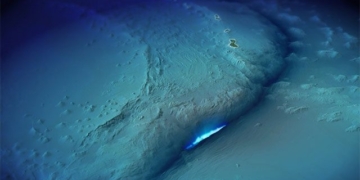Imitation crab is a popular food enjoyed by many people. You may know that imitation crab is not made from real crab meat, but rather from fish. But have you ever wondered why this fish-based product is called imitation crab? And why was this dish created in the first place?
Why Was Imitation Crab Created?
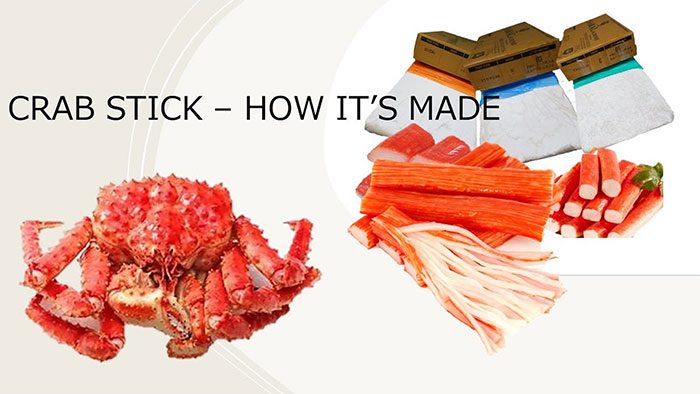
Imitation crab is made from fish, not crab.
Real crab meat, with its fresh and delicious flavor, is something that most people love. However, in the past, transporting crab quickly from ocean catches to land was a very costly and time-consuming process. This is why, several decades ago, food manufacturers and chefs sought a more affordable alternative to meet the strong demand from diners. On the other hand, imitation crab not only costs less but also serves as a useful substitute in sushi rolls, salads, and sauces.
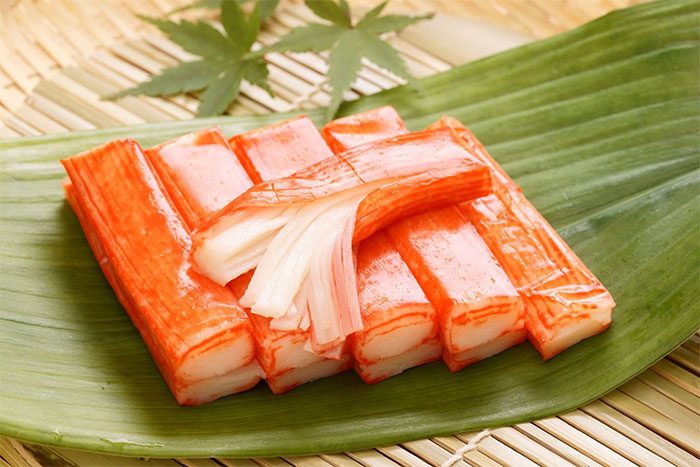
Imitation crab as we commonly see.
So, in the 1970s, the Japanese introduced a type of imitation crab. The processed product that mimics the flavor and appearance of real crab is called surimi. Importantly, surimi is made from white fish, typically Alaska pollock or Pacific cod.
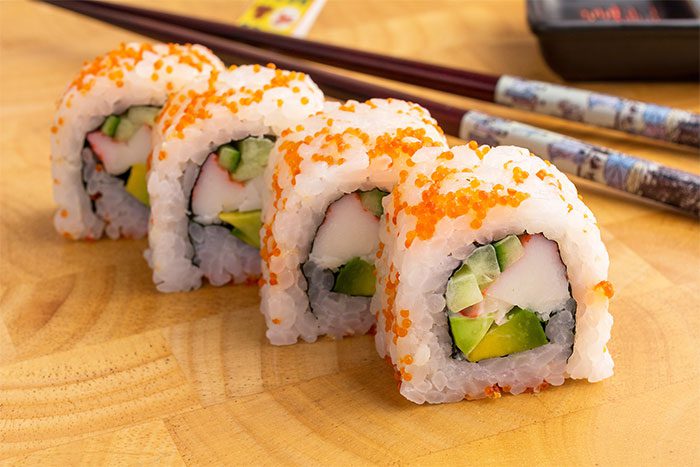
The processed product that mimics the flavor and appearance of real crab is called surimi.
The popularity of surimi stems from its ability to recreate the taste of seafood at a much lower cost. Fooducate estimates that surimi costs about 70-100 cents for 100 grams, while lobster meat can cost $11 per 100 grams.
What Is Imitation Crab – Surimi?

Surimi is actually made from real fish meat.
Although referred to as imitation seafood, surimi is indeed made from real fish meat with a long history. It is an excellent source of protein, low in calories, easily digestible, and very versatile in cooking. Surimi is essentially a seafood paste made from fish meat with artificial flavoring, along with starch, sugar, and sodium. Essentially, imitation crab is made from white fish. The fish meat, after being shredded and washed multiple times in water, is minced and pressed into a tasteless, odorless mixture known as “surimi base.” This base is then frozen at -20 to -30°C before being sold to food companies, who add water, binding agents, and flavors to create the desired product.
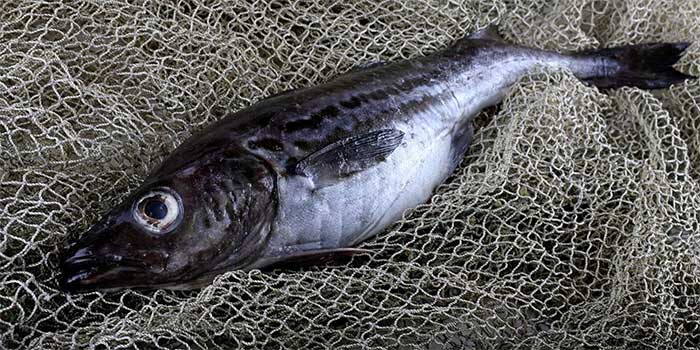
Essentially, imitation crab is made from white fish.
Depending on the type of fish used, surimi can have different nutritional profiles. From surimi, various products can be made, such as shrimp, scallops, crab, crab sticks, and sausages. However, real crab meat has a significantly higher nutritional content, with protein levels nearly three times that of imitation crab. Additionally, imitation crab tends to be higher in sodium and sugar.
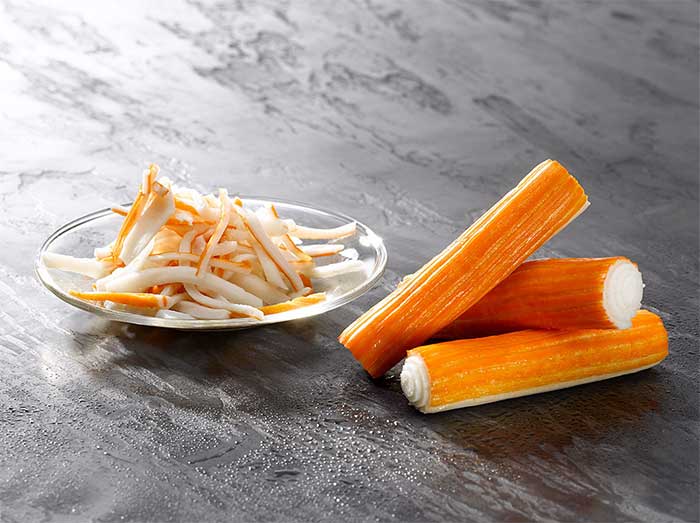
The appearance and marketing have taken this dish in a completely new direction.
In fact, the method of producing surimi has existed in some East Asian regions since the 12th century as a means of preserving fish. Japanese chefs used to utilize any leftover fish by salting and grinding it into a paste. However, surimi did not become a significant phenomenon for the Japanese until the 1960s when a Japanese chemist discovered how to preserve surimi with sugar to extend its shelf life, officially launching the multi-billion dollar surimi industry we see today. The appearance and marketing have taken this dish in a completely new direction.
Surimi is Introduced to the World
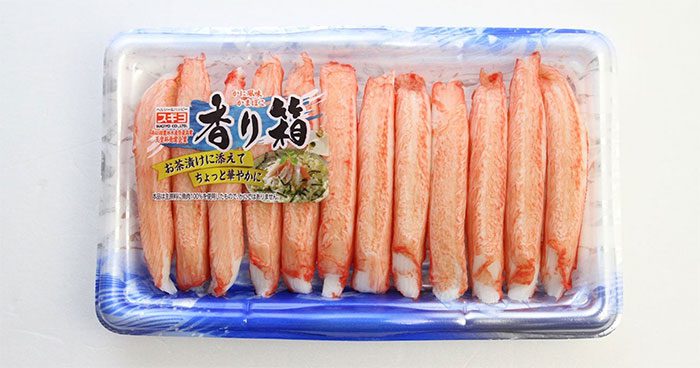
Today, stick-shaped surimi is the most popular form worldwide.
The Japanese company Sugiyo was the first to introduce and patent imitation crab meat in 1974. At that time, surimi was called Kanikama. By 1977, Berelson Company in San Francisco, California, collaborated with Sugiyo to introduce this product to the international market under names like Krab Sticks, Ocean Sticks, Sea Legs, and Fake Crab Sticks. Today, stick-shaped surimi is the most popular form worldwide, accounting for approximately 25% of surimi production. However, some countries have now prohibited manufacturers from using the name “imitation crab” since it contains no actual crab meat.
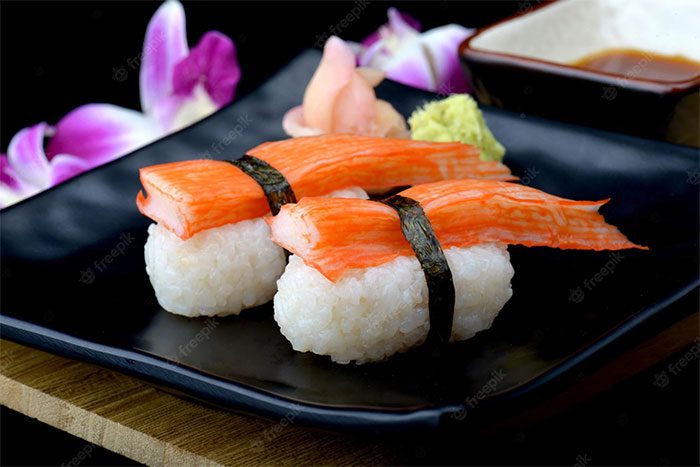
The USA and Japan are the two largest producers of surimi in the world.
Over the years, imitation crab has become popular in restaurants and grocery stores across many countries. The USA and Japan are the two largest producers of surimi, while Thailand is the largest importer.
The Popularity of Imitation Crab
Imitation seafood appears in more dishes than you might think, with even famous food brands like Subway using imitation crab as one of the main ingredients to create seafood flavor in their offerings. Beyond sushi, surimi is consumed as a staple food in many countries. In Thailand, surimi is made into a spicy dish served with onions. In Spain, surimi is dipped in various sauces and is very popular. It is estimated that around 600,000 tons of surimi are consumed annually in South Korea and Japan, while in the USA, the figure is around 3,000 tons.
Red and Orange Imitation Crab
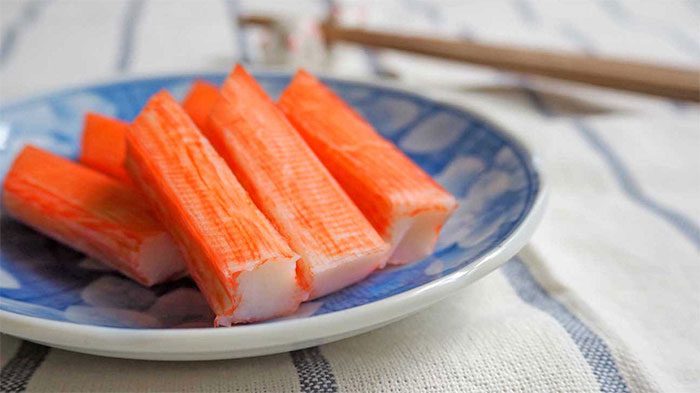
Orange imitation crab.
Color is just one way to identify the product; in France, Belgium, and Italy, imitation crab is orange because it has a crab flavor. In contrast, imitation crab usually appears pink or red with flavors of clam or lobster.
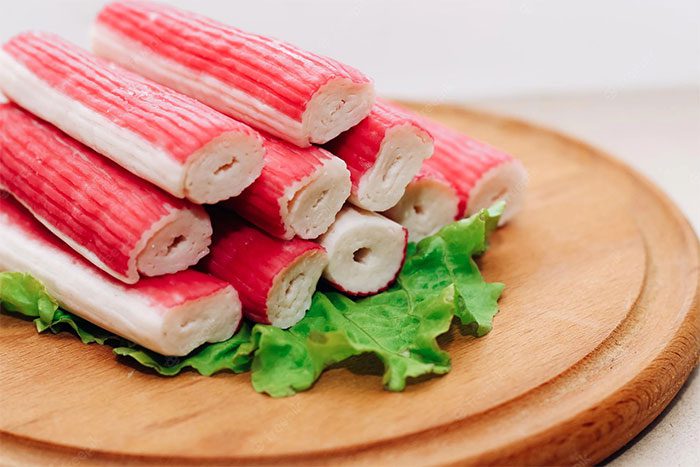
Red imitation crab.
In Japan, there are numerous varieties of surimi. The difference lies in how they are cooked; some are steamed, others baked, boiled, or fried, resulting in different textures.


















































